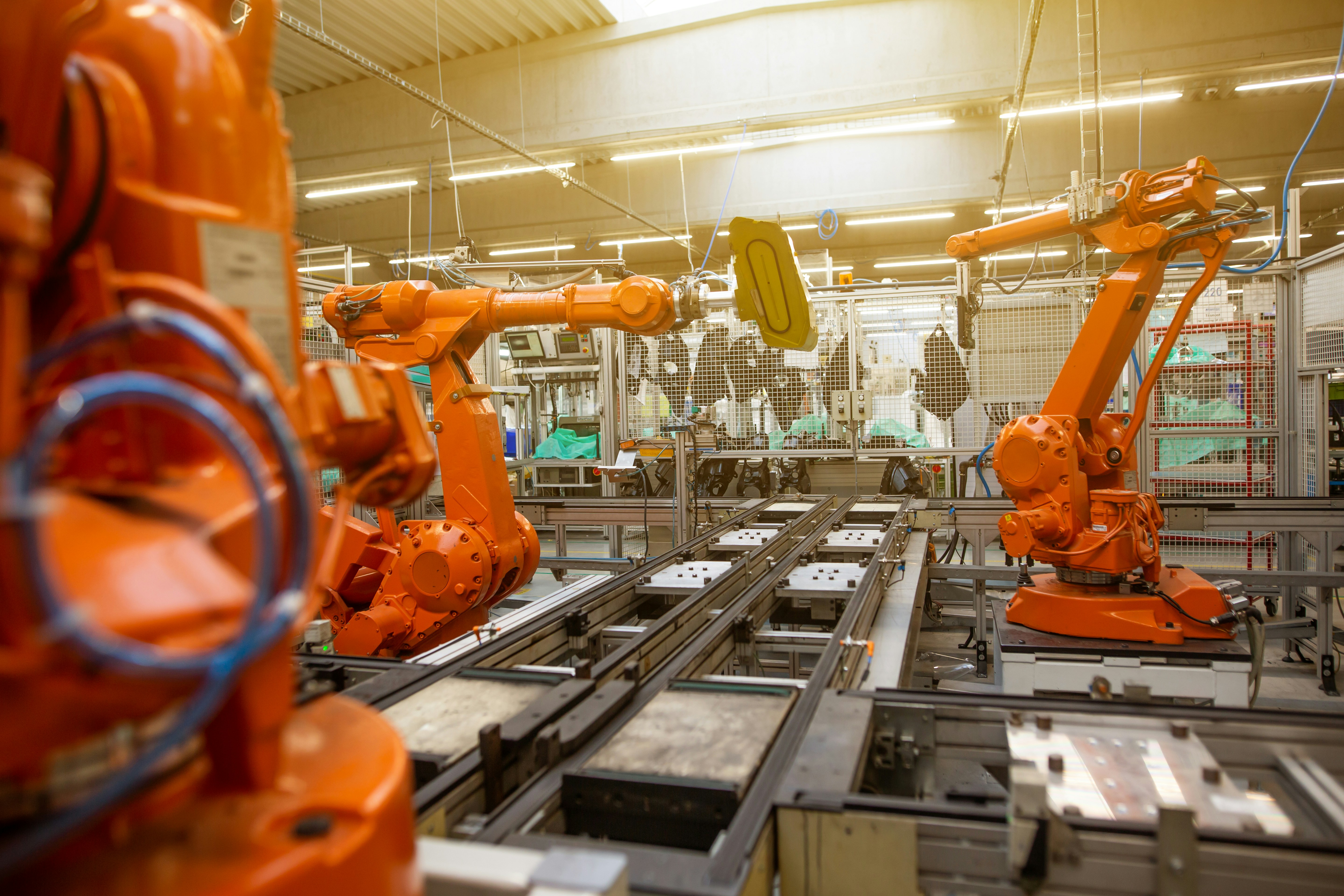
The Ultimate Glossary of Robotics Terms: Your Comprehensive Guide to Automated Innovation
From self-navigating drones and warehouse robots to surgical assistants and autonomous vehicles, robotics continues to shape industries and everyday life. Advancing mechanical design, powerful sensors, embedded systems, AI algorithms, and sophisticated control theories fuel the development of increasingly capable, adaptive, and safe robots. Yet, for newcomers and seasoned professionals alike, navigating the vast vocabulary of robotics can be daunting. This glossary provides a comprehensive guide to essential terminology—enabling you to discuss, design, or evaluate robotic systems with confidence. Should you be seeking or advancing a career in robotics, remember to visit www.roboticsjobs.co.uk and follow Robotics Jobs UK on LinkedIn for the latest roles, events, and insights.
1. Introduction to Robotics
1.1 Robotics
Definition: The interdisciplinary field combining mechanical engineering, electronics, computer science, and AI to design, build, and operate machines (robots) that can sense their environment and execute tasks autonomously or semi-autonomously.
Context: Robotics extends from industrial robot arms on factory floors to sophisticated humanoids, drones, or rovers. Applications span manufacturing, healthcare, logistics, agriculture, and beyond.
1.2 Robot
Definition: A programmable machine—capable of carrying out complex actions—often guided by external or onboard sensors and control algorithms.
Context: Robots can be stationary (e.g., pick-and-place arms) or mobile (e.g., autonomous vehicles), can manipulate objects, navigate terrain, or even function in hazardous environments.
2. Fundamental Concepts & Mechanical Foundations
2.1 Degrees of Freedom (DoF)
Definition: The number of independent movements a robot joint or mechanism can perform. Each rotational or translational axis adds one degree of freedom.
Context: A typical 6-DoF industrial arm can pivot in six distinct ways, allowing flexible positioning of its end-effector.
2.2 Kinematics
Definition: The study of robot motion without considering the forces causing it. Forward kinematics computes end-effector position from joint angles; inverse kinematics determines joint angles needed for a desired end-effector position.
Context: Kinematics is essential for controlling robotic arms, ensuring the manipulator reaches targets accurately and avoids singularities or collisions.
2.3 Dynamics
Definition: The study of forces and torques affecting a robot’s motion. Involves inertia, friction, gravity compensation, and control strategies to move or manipulate objects stably.
Context: Dynamics calculations are crucial for heavy payloads or high-speed robots, ensuring precise control under acceleration or deceleration.
2.4 End-Effector
Definition: The tool or device attached to a robot’s arm for interacting with the environment, e.g. a gripper, welding torch, or camera.
Context: End-effectors vary widely: vacuum grippers for picking items, specialised surgical instruments for medical robots, or sensors for inspection tasks.
2.5 Actuators & Motors
Definition: Mechanical devices (electric motors, hydraulic/pneumatic cylinders) that convert energy into motion, powering each robot joint or wheel.
Context: Electric motors (DC, servo, stepper) dominate many designs, balancing torque, precision, and power consumption. Hydraulic systems excel in heavy-load contexts.
3. Robot Control & Architecture
3.1 Robot Operating System (ROS)
Definition: A popular open-source robotics framework providing tools, libraries, and conventions for building complex robot software systems. ROS2 offers real-time, multi-platform improvements.
Context: ROS standardises message passing, package organisation, sensor drivers, and community-driven modules, accelerating robotics development.
3.2 Embedded Systems
Definition: Specialised computer systems within robots handling low-level tasks—reading sensors, running real-time loops, or controlling actuators. Often resource-constrained and safety-critical.
Context: Embedded systems might run on microcontrollers (ARM Cortex, PIC) or SoCs for real-time motor control, sensor fusion, or basic AI inference.
3.3 Control Loop (Feedback Control)
Definition: A system where sensor inputs guide actuator outputs in real time, adjusting movements or positions to meet desired targets or trajectories.
Context: PID controllers or advanced model predictive control loops maintain stable and accurate operation under dynamic conditions.
3.4 Inverse & Forward Kinematics
Definition:
Forward Kinematics: Determining the end-effector’s position/orientation from known joint angles.
Inverse Kinematics: Computing joint angles required to place the end-effector at a specific point.
Context: Robots rely on inverse kinematics for motion planning. The geometry can get complex, especially for multi-jointed manipulators.
4. Sensors & Perception
4.1 IMU (Inertial Measurement Unit)
Definition: A sensor combining accelerometers, gyroscopes (and sometimes magnetometers) to track orientation, velocity, and acceleration in 3D space.
Context: IMUs are widely used in mobile robots, drones, and AGVs for basic pose estimation, often fused with other sensors like wheels’ odometry or cameras.
4.2 LiDAR (Light Detection and Ranging)
Definition: A remote sensing method using pulsed laser beams to measure distance, forming 2D or 3D point clouds. Commonly used in autonomous vehicles or mapping robots.
Context: LiDAR offers high accuracy for obstacle detection and environment mapping, but can be costly or sensitive to weather conditions.
4.3 SLAM (Simultaneous Localisation and Mapping)
Definition: Algorithms enabling a robot to build a map of an unknown environment while tracking its position in that map simultaneously.
Context: SLAM techniques (e.g., ORB-SLAM, Cartographer) integrate sensor data from cameras, LiDAR, or depth sensors—critical for mobile robots in unstructured settings.
4.4 Depth Sensors / Stereo Vision
Definition: Cameras or sensor arrays measuring the distance of objects in a scene. Stereo setups use triangulation from two viewpoints; structured-light or ToF (time-of-flight) sensors project patterns or pulses.
Context: Depth data helps robots avoid obstacles, pick items accurately, or interact safely with humans.
5. AI, Machine Learning & Planning
5.1 Path Planning
Definition: Algorithms that compute collision-free paths for mobile robots or manipulators, factoring in obstacles and kinematic constraints.
Context: RRT (Rapidly-exploring Random Trees), A* or D* are common path planners. AI-driven approaches or cost maps might handle dynamic environments or uncertain conditions.
5.2 Computer Vision in Robotics
Definition: Using cameras and vision algorithms (object detection, tracking, segmentation) to interpret the environment—recognising people, signs, or landmarks.
Context: Deep learning has revolutionised robotic perception—enabling tasks like advanced face recognition or real-time object classification for safe navigation.
5.3 Reinforcement Learning
Definition: An AI paradigm where a robot agent learns optimal strategies by trial and error within an environment, receiving rewards or penalties for actions.
Context: Reinforcement Learning can train complex behaviours (e.g., dexterous manipulation, dynamic locomotion) though it may need substantial simulation or real-world data.
5.4 Motion/Task Planning
Definition: Higher-level scheduling or sequencing of tasks for a robot—deciding which object to pick first, or how to handle multi-step assembly processes.
Context: Complex motion/task planning merges discrete reasoning (AI planning) with continuous control (robot dynamics).
6. Human-Robot Interaction & Safety
6.1 Collaborative Robots (Cobots)
Definition: Robots designed to work alongside humans, featuring sensors, force-limited actuators, or safety measures to prevent accidental harm.
Context: Cobots excel in partial automation, assisting tasks that benefit from human-robot synergy (like machine tending or assembly lines).
6.2 HRI (Human-Robot Interaction)
Definition: The study and design of intuitive interfaces, gestures, or communication methods enabling humans to seamlessly operate or collaborate with robots.
Context: HRI includes voice commands, VR/AR-based control, or tactile feedback. User experience and safety are priorities.
6.3 Safety Standards (ISO 10218, etc.)
Definition: Regulations or guidelines ensuring robotic systems pose minimal risk to operators or bystanders, specifying physical guards, speed limits, or control system redundancy.
Context: Industrial settings often require safety fences, light curtains, or emergency stops. Collaborative or medical robots must pass additional stringent safety audits.
6.4 Teleoperation
Definition: Controlling a robot from a distance—transmitting operator inputs for robot motion, often with real-time video or haptic feedback.
Context: Teleop is crucial for hazardous environments (nuclear, underwater, space) or remote surgery systems (telerobotics).
7. Industrial & Service Robotics
7.1 Industrial Robots
Definition: Typically used on production lines for tasks like welding, painting, assembly, or packaging. Often large, rigid, with 4-6 axes or more, operating in structured settings.
Context: Industrial robots can be integrated with PLCs and SCADA systems. High precision and repeatability define them, while collaborative variants are emerging.
7.2 AGVs / AMRs
Definition: Automated Guided Vehicles or Autonomous Mobile Robots for transporting goods in warehouses/factories. They navigate via markers, reflectors, or advanced SLAM.
Context: AGVs/AMRs reduce manual labour, streamline logistics, but require robust safety sensors and route management for multi-robot fleets.
7.3 Service Robots
Definition: Robots assisting humans in everyday tasks—domestic vacuum cleaners, lawn mowers, hospitality bots, or exoskeletons for physical assistance.
Context: Service robots vary from consumer-grade simple devices to advanced systems requiring extensive AI for real-world unpredictability.
7.4 Medical & Surgical Robotics
Definition: Precision-engineered robotic arms or teleoperated devices aiding surgeons in minimally invasive procedures, or assisting patients in rehabilitation.
Context: Medical robots must meet strict safety/regulatory standards (FDA, CE marking). Examples include da Vinci surgical systems or exoskeletons for physiotherapy.
8. Advanced Topics & Emerging Trends
8.1 Swarm Robotics
Definition: Coordinating large numbers of relatively simple robots collaborating on tasks through local interactions, often inspired by social insects.
Context: Swarm applications might include search-and-rescue, agriculture, or distributed inventory management. Complexity arises in decentralised control and emergent behaviours.
8.2 Soft Robotics
Definition: Robots made from compliant, flexible materials (elastomers, textiles) enabling safe, adaptive interaction with fragile objects or humans.
Context: Soft robotics suits biomedical devices, prosthetics, or handling delicate produce in food processing. They often rely on pneumatic or shape-memory actuators.
8.3 Reinforcement Learning for Real-World Robots
Definition: Integrating RL algorithms with physical hardware, bridging sim-to-real gap, refining policies to handle unknown conditions.
Context: Robots can self-learn advanced motor skills, but sim-to-real transitions can be tricky due to domain mismatches in physics or sensor noise.
8.4 Ethics & Societal Impact
Definition: Responsible design ensuring labour displacement, privacy, or weaponisation risks are addressed. Ensuring user trust, regulating AI biases in social or domestic robots.
Context: Robotic ethics spans data privacy (cameras in public), accountability if a robot injures a person, or equitable job transitions in automated sectors.
9. Conclusion & Next Steps
Whether you’re passionate about designing mechanical structures, perfecting control algorithms, or bridging robots and humans through intuitive interfaces, robotics offers an exciting, ever-evolving landscape. From industrial production lines to advanced surgical procedures, robots are transforming how we live and work. By mastering these concepts—from degrees of freedom and motion planning to computer vision, AI, and HRI—you’ll build a solid foundation for contributing to the next wave of robotic innovation.
Key Takeaways:
Understand the Basics: Grasp fundamentals—kinematics, actuators, sensor integration—before diving into advanced AI or collaborative systems.
Stay Current: Robotics merges fields from embedded systems to deep learning. Continuous learning—through R&D, open-source software, or conferences—keeps you up-to-date.
Focus on Real-World Constraints: Safety, reliability, and cost matter as much as ground-breaking concepts. Practical design ensures robots are commercialised successfully.
Seek Opportunities: If you’re keen to explore or advance in robotics, www.roboticsjobs.co.uk lists roles that may suit your specialities—be it hardware, software, AI, or operations.
Next Steps:
Network & Engage: Join robotics competitions, local groups, or major conferences (e.g. ICRA, IROS) to connect with experts or find mentors.
Build a Portfolio: Contribute to open-source frameworks (ROS, MoveIt), share personal projects, or highlight robotics research experiences.
Follow Robotics Jobs UK on LinkedIn: Stay updated on job postings, industry events, and behind-the-scenes insights shaping robotics.
As robotics expands—serving manufacturing, healthcare, logistics, household tasks, and beyond—there’s a growing need for talented professionals to design, build, deploy, and maintain these intelligent machines. By grasping core vocabulary and deepening your expertise, you’re poised to help shape a future where robots and humans collaborate safely and productively.


